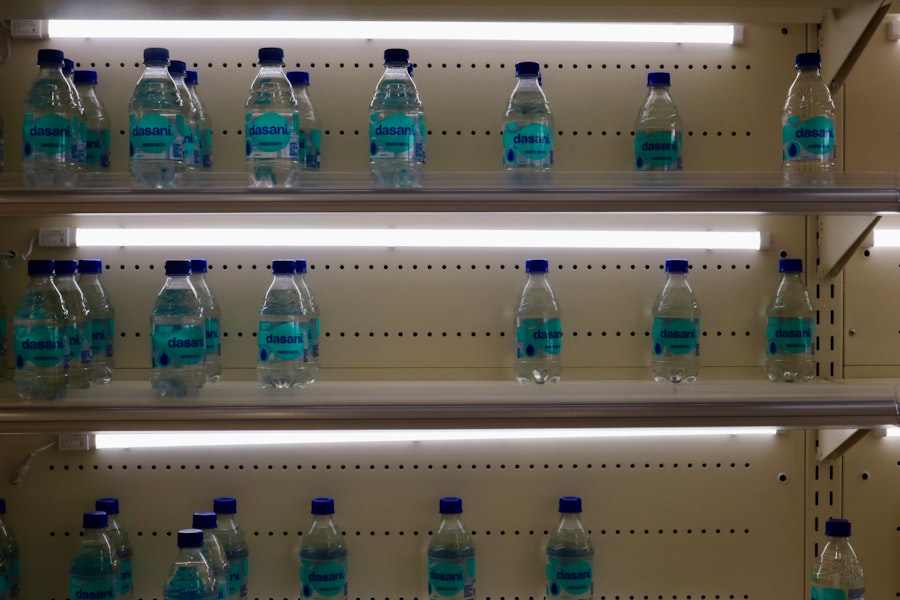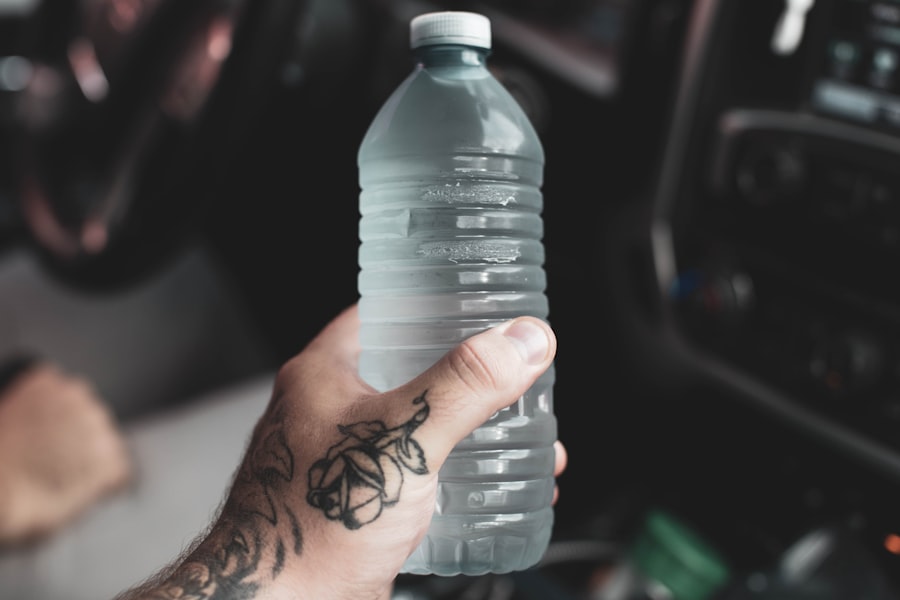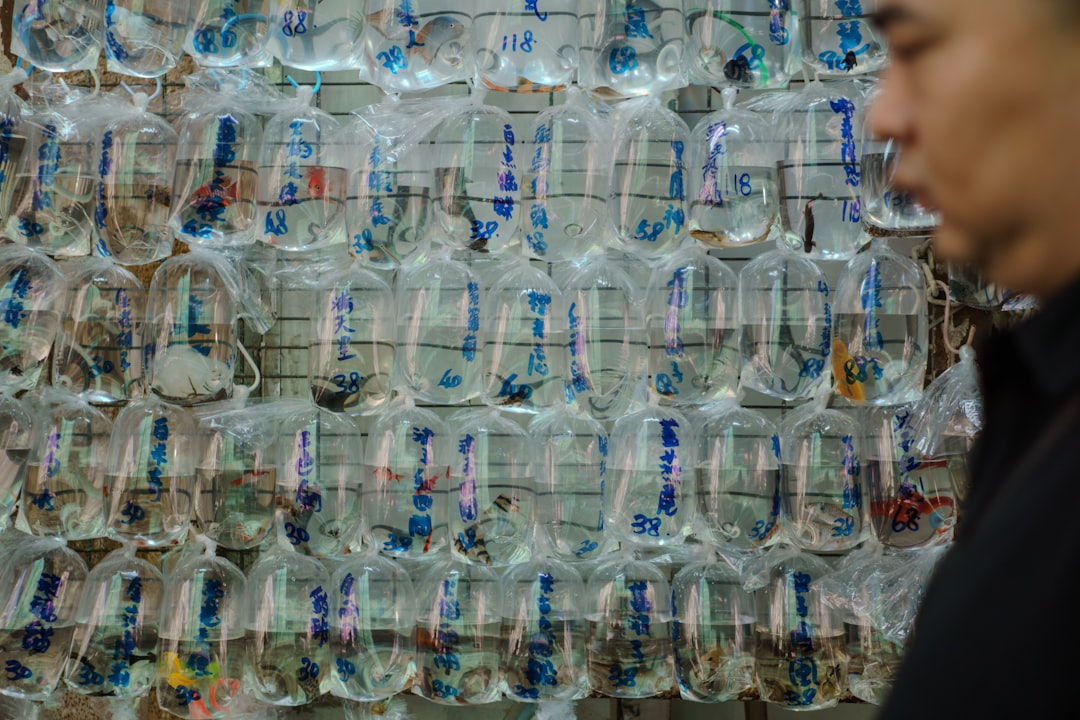In recent decades, bottled water has surged in popularity, becoming a staple in the diets of many individuals across the globe. This trend can be attributed to a variety of factors, including increased health consciousness, convenience, and a growing distrust of tap water quality. As people become more aware of the importance of hydration, bottled water has emerged as a go-to option for those seeking a quick and easy way to stay hydrated throughout their busy lives.
The convenience of grabbing a bottle on the go has made it an appealing choice for consumers, particularly in urban areas where access to clean drinking water may be perceived as limited. Moreover, the marketing strategies employed by bottled water companies have played a significant role in this rise. Brands have successfully positioned bottled water as a premium product, often associating it with luxury, health, and wellness.
This perception has led to an increase in demand, with consumers willing to pay a premium for what they believe to be a superior product. As a result, bottled water sales have skyrocketed, with the industry generating billions of dollars annually. The combination of convenience, marketing prowess, and health trends has solidified bottled water’s place in modern society.
Key Takeaways
- Bottled water has surged in popularity due to convenience and perceived purity.
- Environmental concerns arise from plastic waste and resource use in bottled water production.
- Regulations ensure bottled water meets safety and quality standards, but quality varies by source.
- Comparing bottled water to tap water reveals differences in cost, taste, and safety perceptions.
- Sustainable alternatives like reusable bottles and filtered tap water help reduce environmental impact.
Understanding the Different Sources of Bottled Water
Bottled water is not a monolithic product; it comes from various sources, each with its unique characteristics and qualities. The most common types include spring water, mineral water, purified water, and well water. Spring water is sourced from natural springs and is often celebrated for its refreshing taste and mineral content.
It is typically collected at the source and bottled without undergoing extensive treatment, preserving its natural properties. Mineral water, on the other hand, contains a higher concentration of dissolved minerals and is often sourced from underground reservoirs. This type of water is believed to offer additional health benefits due to its mineral content.
Purified water is another prevalent category, which undergoes rigorous filtration processes to remove impurities and contaminants. This type of water can come from various sources, including tap water, but is treated to meet specific safety standards. Well water is sourced from underground aquifers and can vary significantly in quality depending on the location and surrounding environment.
Understanding these different sources is crucial for consumers who wish to make informed choices about the bottled water they purchase. Each type offers distinct flavors and potential health benefits, making it essential for individuals to consider their preferences and needs when selecting bottled water.
The Environmental Impact of Bottled Water

The environmental impact of bottled water is a pressing concern that has garnered significant attention in recent years. The production and disposal of plastic bottles contribute to pollution and waste, raising questions about sustainability in the bottled water industry.
This plastic pollution poses a threat to wildlife and ecosystems, as animals often mistake plastic for food or become entangled in it. Additionally, the extraction of water for bottling can strain local water resources, particularly in regions facing drought or water scarcity. Companies often draw from aquifers or springs, which can lead to depletion of these vital resources over time.
This practice has sparked debates about the ethical implications of bottling water in areas where communities may struggle to access clean drinking water. As awareness of these environmental issues grows, consumers are increasingly seeking alternatives that prioritize sustainability and reduce their ecological footprint.
Regulations and Standards for Bottled Water
| Regulation/Standard | Region | Key Requirements | Enforcing Agency | Testing Frequency |
|---|---|---|---|---|
| FDA Bottled Water Standard of Identity | United States | Defines types of bottled water, limits on contaminants, labeling requirements | Food and Drug Administration (FDA) | Periodic, varies by state and manufacturer |
| EPA Safe Drinking Water Act (SDWA) | United States | Sets maximum contaminant levels for public water systems, including source water for bottled water | Environmental Protection Agency (EPA) | Regular monitoring of source water |
| European Union Directive 2009/54/EC | European Union | Regulates mineral water and spring water, sets microbiological and chemical standards | European Commission and Member States | At least twice per year |
| Codex Alimentarius – Standard for Natural Mineral Water | International | Specifies quality criteria, labeling, and packaging requirements for natural mineral water | Codex Alimentarius Commission (FAO/WHO) | Varies by country |
| IS 14543:2016 – Packaged Drinking Water | India | Specifies requirements for packaged drinking water including physical, chemical, and microbiological parameters | Bureau of Indian Standards (BIS) | Regular sampling and testing |
| Australian Drinking Water Guidelines | Australia | Guidelines for bottled water quality, including chemical, microbiological, and radiological parameters | National Health and Medical Research Council (NHMRC) | Ongoing monitoring |
The bottled water industry is subject to various regulations and standards designed to ensure safety and quality for consumers. In many countries, including the United States, the Food and Drug Administration (FDA) oversees bottled water production and labeling. The FDA establishes guidelines that manufacturers must follow regarding sanitation practices, testing for contaminants, and labeling requirements.
These regulations aim to protect consumers from potential health risks associated with contaminated or improperly labeled products. However, despite these regulations, there are still concerns about the consistency and enforcement of standards across different brands and types of bottled water. Some critics argue that the lack of stringent oversight can lead to discrepancies in quality between products.
Furthermore, while bottled water may meet safety standards, it does not necessarily guarantee superior quality compared to tap water. As consumers become more informed about these regulations, they may seek out brands that prioritize transparency and adhere to higher standards in their production processes.
The Process of Bottling Water
The process of bottling water involves several steps designed to ensure that the final product is safe for consumption while retaining its natural qualities. Initially, the source water is collected from springs or wells and transported to bottling facilities. Once at the facility, the water undergoes rigorous testing for contaminants such as bacteria, heavy metals, and chemical pollutants.
This testing is crucial for ensuring that the water meets safety standards before it is processed further. After testing, the water may undergo additional purification methods such as reverse osmosis or ultraviolet treatment to eliminate any remaining impurities. Once purified, the water is typically filtered again before being bottled.
The bottling process itself involves filling sterilized containers with the treated water and sealing them to prevent contamination during storage and transportation. Throughout this process, strict hygiene protocols are maintained to ensure that the final product is safe for consumers. Understanding this process can help consumers appreciate the efforts taken by manufacturers to provide high-quality bottled water.
The Debate Over the Quality of Bottled Water

The debate surrounding the quality of bottled water versus tap water has been ongoing for years, with passionate arguments on both sides. Proponents of bottled water often cite its convenience and perceived purity as key advantages over tap water. They argue that bottled water undergoes more rigorous testing and treatment processes than municipal tap supplies, which can vary in quality depending on location and infrastructure.
Additionally, many consumers believe that bottled water tastes better than tap water due to its mineral content or lack of chlorine taste. Conversely, critics argue that tap water is often just as safe—if not safer—than bottled alternatives. Many municipal water systems are subject to strict regulations and regular testing for contaminants, ensuring that they meet safety standards set by government agencies.
Furthermore, studies have shown that some bottled waters are essentially repurposed tap water that has undergone minimal treatment before being sold at a premium price. This revelation has led many consumers to question whether they are truly getting a superior product when they choose bottled over tap.
The Health Benefits and Risks of Bottled Water
Bottled water is often marketed as a healthier alternative to sugary beverages or even tap water; however, it comes with both benefits and risks that consumers should consider. One significant advantage is that bottled water provides a convenient way for individuals to stay hydrated throughout their day-to-day activities. For those who struggle to drink enough fluids or who are constantly on the go, having access to bottled water can encourage better hydration habits.
On the flip side, there are potential health risks associated with consuming bottled water regularly. One concern is the leaching of chemicals from plastic bottles into the water itself, particularly when bottles are exposed to heat or stored for extended periods. Some studies have raised alarms about substances like bisphenol A (BPA) found in certain plastics that may disrupt hormonal balance in humans.
Additionally, while bottled water may be free from contaminants at the time of bottling, improper storage or handling can lead to bacterial growth or contamination before consumption.
Comparing Bottled Water to Tap Water
When comparing bottled water to tap water, several factors come into play that can influence consumer choices. One primary consideration is cost; bottled water typically comes at a significantly higher price point than tap water, which is often available at little to no cost in most urban areas. For budget-conscious consumers or those looking to reduce their environmental impact, tap water presents a more economical option.
Taste is another critical factor influencing consumer preferences between these two options. While some individuals prefer the crispness of certain brands of bottled spring or mineral waters, others find that tap water meets their needs just fine—especially when filtered through home filtration systems designed to improve taste and remove impurities. Ultimately, personal preference plays a significant role in this comparison; however, understanding the differences in cost, taste, and environmental impact can help individuals make informed decisions about their hydration choices.
The Marketing and Labeling of Bottled Water
The marketing strategies employed by bottled water companies are instrumental in shaping consumer perceptions and driving sales within this competitive industry.
This branding often creates an image of exclusivity or luxury around certain products while positioning others as everyday essentials.
Labeling also plays a crucial role in consumer decision-making when it comes to bottled water purchases. Clear labeling regarding source type (spring vs. purified), mineral content, and any added ingredients can help consumers make informed choices based on their preferences or dietary needs.
However, some critics argue that misleading labels can create confusion among consumers who may not fully understand what terms like “natural” or “artesian” mean in relation to quality or sourcing practices.
Sustainable Alternatives to Bottled Water
As awareness grows regarding the environmental impact of bottled water consumption, many individuals are seeking sustainable alternatives that minimize waste while still providing access to clean drinking options. One popular alternative is reusable stainless steel or glass bottles paired with home filtration systems designed to improve tap water quality and taste. These solutions not only reduce reliance on single-use plastics but also encourage individuals to drink more tap water without sacrificing convenience.
Another emerging trend involves companies offering refill stations where consumers can fill their reusable containers with filtered or purified water at lower costs than purchasing bottled options. These refill stations are becoming increasingly common in urban areas and public spaces as communities recognize the need for sustainable hydration solutions that reduce plastic waste while promoting healthier choices among residents.
Making Informed Choices About Bottled Water
In an era where information is readily available at consumers’ fingertips, making informed choices about bottled water has never been more accessible—or necessary. Individuals should consider factors such as source type, environmental impact, packaging materials used by brands they support, and any certifications related to sustainability or ethical sourcing practices when selecting products for purchase. Additionally, staying informed about local tap water quality reports can empower consumers to make educated decisions regarding their hydration options—whether opting for bottled or tap sources based on personal preferences or health considerations.
By prioritizing transparency in labeling practices while supporting brands committed to sustainability efforts within the industry landscape overall—consumers can contribute positively toward reducing plastic waste while enjoying safe drinking options tailored specifically for their needs.
Bottled water source disclosure has become an increasingly important topic as consumers seek transparency about the origins of their beverages. A related article that delves into this issue can be found at this link, where it discusses the implications of sourcing practices and the impact on consumer choices. Understanding where bottled water comes from can help individuals make more informed decisions about their hydration options.
WATCH THIS! The $400 Billion Water Lie: Why Bottled Water Is a Scam
FAQs
What is bottled water source disclosure?
Bottled water source disclosure refers to the practice of providing information about the origin of the water used in bottled water products. This typically includes details about whether the water comes from a spring, well, municipal supply, or other sources.
Why is source disclosure important for bottled water?
Source disclosure is important because it helps consumers make informed choices about the quality and safety of the water they are purchasing. It also promotes transparency and accountability among bottled water companies.
Are bottled water companies required to disclose their water sources?
Regulations vary by country and region. In many places, bottled water companies are legally required to disclose the source of their water on the product label. For example, in the United States, the Food and Drug Administration (FDA) mandates source disclosure on bottled water labels.
What types of water sources are commonly used for bottled water?
Common sources include natural springs, artesian wells, municipal tap water, and purified water that has undergone treatment processes such as reverse osmosis or distillation.
How can consumers identify the source of bottled water?
Consumers can usually find the source information on the label of the bottled water. It may specify the name of the spring, well, or municipal source, or indicate if the water is purified or distilled.
Does the source of bottled water affect its quality?
The source can influence the mineral content, taste, and purity of the water. However, all bottled water must meet safety standards regardless of the source. Some consumers prefer natural spring water for its mineral content, while others may choose purified water for its lack of impurities.
Are there any certifications related to bottled water source disclosure?
Yes, some bottled water brands obtain certifications from organizations that verify the authenticity and quality of the water source. These certifications can provide additional assurance to consumers about the source and quality of the water.
Can the source of bottled water change over time?
Yes, bottled water companies may change their water sources due to availability, quality concerns, or business decisions. It is important for companies to update their labels accordingly to maintain transparency.
How does bottled water source disclosure impact environmental concerns?
Source disclosure can raise awareness about the environmental impact of water extraction from natural sources. It encourages responsible sourcing practices and helps consumers support brands that prioritize sustainability.
Where can I find more information about bottled water regulations and source disclosure?
Information can be found through government agencies such as the FDA in the United States, the European Food Safety Authority (EFSA) in Europe, or other national regulatory bodies. Additionally, bottled water companies often provide source information on their websites.
